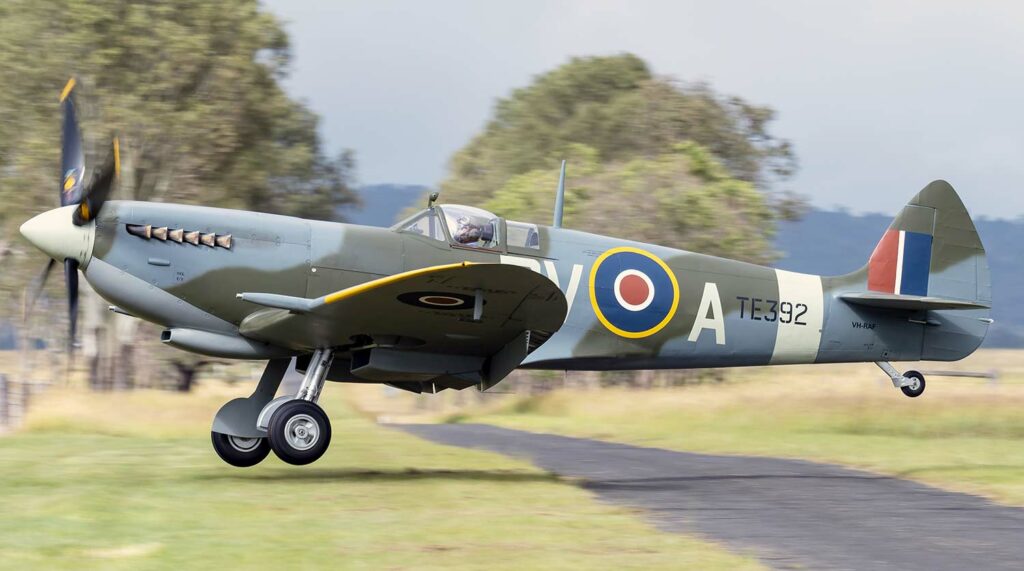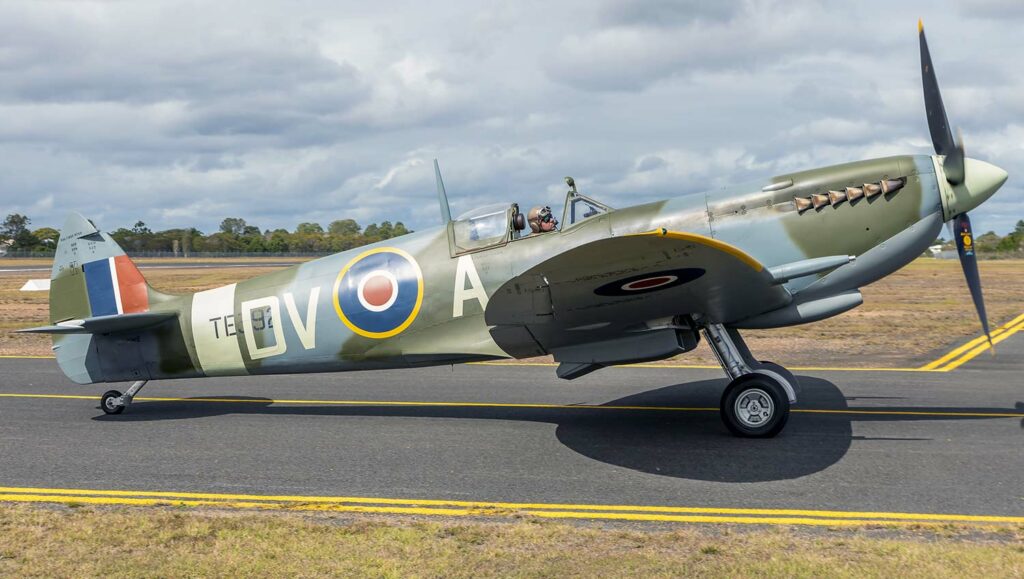A WWII icon, the Spitfire Mk XVI featured a 1,720 HP Packard Merlin engine, clipped wings for agility, excelling in low-altitude European operations.
The Supermarine Spitfire Mk XVI epitomizes British WWII aviation achievements. Developed for enhanced low-altitude operations, it combined a powerful Packard Merlin engine with innovative design elements. This article explores its development, design, performance, and military significance, highlighting its impact on WWII aerial warfare.
The Supermarine Spitfire Mk XVI, a standout fighter aircraft of WWII, symbolizes British aeronautical prowess. Renowned for its exceptional performance and pivotal role in securing air dominance, it remains an enduring icon of aviation history.

History of the Development of the Supermarine Spitfire Mk XVI
Developed amidst WWII’s intense aerial combat demands, the Spitfire Mk XVI was a strategic evolution in Supermarine’s renowned fighter series. The project, driven by a need for a versatile, low-altitude fighter, was initiated by Supermarine Aviation Works. The Mk XVI first flew on March 27, 1945.
This variant distinguished itself with the American-built Packard Merlin 266 engine, addressing the shortage of British-built Merlin engines and enhancing low-altitude performance. This change marked a critical adaptation, enabling the Spitfire to effectively counter German fighters in Europe.
Design of the Supermarine Spitfire Mk XVI
The Mk XVI’s design was a strategic adaptation for low-altitude agility. Measuring 31 feet 3.5 inches (9.54 meters) in length and with a wingspan of 32 feet 2 inches (9.8 meters), it was compact yet robust. Its distinctive clipped wings, reducing wingspan to 32 feet 6 inches (9.91 meters), enhanced roll speed and maneuverability at lower altitudes.
The aircraft’s fuselage combined aluminum and steel, balancing strength with lightness. The Packard Merlin 266 engine, delivering 1,720 HP (1,282 kW), was a critical enhancement, ensuring superior performance.
However, the clipped wings, while beneficial for low-altitude dogfights, slightly compromised high-altitude capabilities and range. Despite this, the Spitfire Mk XVI’s design was a significant advancement in addressing specific combat scenarios.
Performance of the Supermarine Spitfire Mk XVI
The Spitfire Mk XVI excelled in performance metrics crucial for WWII combat. The Packard Merlin 266 engine propelled it to a top speed of 404 mph (650 km/h), a service ceiling of 40,000 feet (12,192 meters), and a range of 434 miles (698 km).
Compared to contemporaries like the Messerschmitt Bf 109 and Focke-Wulf Fw 190, the Spitfire Mk XVI stood out in agility and acceleration, often surpassing them in maneuverability, if not in raw speed.

Military Use and Combat of the Supermarine Spitfire Mk XVI
The Mk XVI was armed with two 20 mm Hispano cannons and two .50 cal Browning machine guns. Its combat role was significant, particularly in European operations, excelling in interception and ground-attack missions.
Operated chiefly by the RAF and several Allied air forces, its adaptability in various combat scenarios was notable. The Mk XVI was eventually replaced by jet fighters like the Gloster Meteor, marking the end of its service era.
The Supermarine Spitfire Mk XVI remains a quintessential example of WWII fighter development. Its design, performance, and combat history reflect the era’s technological advancements and strategic necessities, cementing its place in military aviation history.
Back to the Warbirds section.